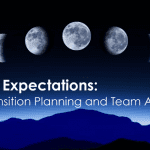What happens on the first day of a new merger or acquisition?
A merger or acquisition has been weeks or months in the planning. Day 1 of the new company is here. You know that culture integration is a critical component of the ultimate success of the deal. What needs to start happening, and what should the priorities be to help the culture integration move forward?
As noted in our previous blog, the exact process will depend upon the level of integration the companies require and the amount of groundwork that was laid in advance. In cases where the company cultures intend to remain distinct, the process many not take long at all. But in most cases one culture absorbs another, or the two cultures seek to capture the ‘best of both’ in order to transform into something new and better. The landscape is littered with those corporate marriages that failed. How do you avoid the culture clashes that have doomed so many others who had good intentions but who suffered disastrous consequences?
Hopefully, by this stage, the companies have done some Cultural Due Diligence and have subsequently spent time laying the groundwork for the integration process. Often the acquiring company won’t have direct access to the broader work force of the acquired company until day 1. The opportunity to capture a comprehensive view of the ‘as is’ cultures of the respective companies now presents itself. It is a critical time to let employees know that the culture work is an important component of the integration activity and that it will be approached both thoughtfully and with intention. Regardless of the preparation to-date, Day 1 is where the real work of culture integration begins.
Looking for ‘potentials’
A close examination of the current culture of the respective organizations typically involves a combination of qualitative and quantitative data gathering. As we begin to analyze the data gathered from the respective companies we start to sort the results into three categories:
- Areas of ‘potential’ synergy (cultural areas where both companies appear to have very clear and aligned ways of operating)
- Areas of ‘potential’ best practices (where one company shows high levels of clarity and alignment and the other shows more uncertainty and ambiguity)
- Areas of ‘potential’ blind spots (where both companies seem to lack clarity and alignment and thus neither offer a readily available set of best practices)
We emphasize the word “potential” because even when two companies share strengths in a specific area of the Denison model, it does not mean they share the same habits and practices related to that area. It does tell us that both companies have placed emphasis on that aspect of culture and have developed their way of doing it in their organization. Let’s take a cultural measure such as Customer Focus as an example. Suppose the culture data suggests that the workforce of each company is very clear and aligned in how they think about and engage their customers. We would say that Customer Focus is an area of potential synergy.
What we would now know on Day 1 (or in the very early stages of integration) is that both companies place emphasis on understanding and serving their customers, and have developed a set of habits, routines and practices designed to demonstrate the importance they place on the customer. The good news is that both companies see value in being Customer Focused. It is a priority. However, because both organizations feel strongly about the customer it becomes even more important to identify the specific practices used by the respective companies to engage their customers. These become the classic ‘right vs. right’ conversations where both sets of practices are right, but a common set of practices needs to be adopted by the combined company as THE practices to be used going forward. It is much harder to get people to let go of what has worked for them in the past than it is to get them to adopt something they have had little success with.
Best practices are when one organization has developed a great deal of clarity and alignment in an area where the other organization has not. The data may indicate that one company has built a number of habits and practices in an area such as Goals & Objectives. Employees know how goals are set, who is involved in setting the goals, how they are measured, what happens when they are met, etc. A number of potential best practices exist. The other company may lack discipline in this area resulting in a higher level of uncertainty and ambiguity when the topic of Goals is raised. It is important to note that best practices can be found in either company and can be brought forward into the combined company provided each company is willing to acknowledge that the other company has something to offer and is willing to adopt proven practices in an area they have failed to develop on their own.
Where neither organization has scored well in an area, they share a potential blind spot. The culture data may indicate that neither company has developed very much clarity and alignment in an area such as Empowerment. We know from our research that Empowerment is important to success in organizations and impacts quality, safety, innovation and engagement. If neither organization has practices in place that promote an empowered, informed, and generally more involved workforce, this ‘blind spot’ emerges as an area of importance and one for which neither organization has a readily accessible set of practices to draw upon. It is an area that both organizations can work together to improve.
Using culture data to inform the integration process
Day 1 of a merger or acquisition is a time of great opportunity and also great risk. The good news is that the uncertainty associated with whether the deal will close is resolved. However, that uncertainty is quickly replaced with the ambiguity that has leaders and employees wondering about their roles, job titles, compensation, retirement plans, the status of their colleagues…and what the future now holds for this new entity. This type of internal uncertainty distracts people from the customers and marketplace they serve. Competitors are all too willing to fill any void created.
Leaders are in a precarious position as they must show patience and thoughtfulness regarding the integration while acting quickly and decisively to align the workforce around a common Vision for the future. As is true in many of life’s endeavors, preparation and a carefully crafted game plan is important. So it is true with culture integration. On Day 1 all the players take the field, the whistle blows and the work begins. We have learned a lot at Denison about success in culture integration and stand ready to help leaders and employees take informed and definitive actions to begin the drive to create a ‘single, high performing company’.




